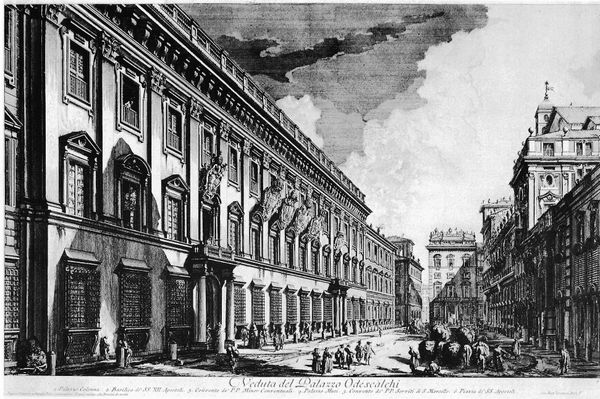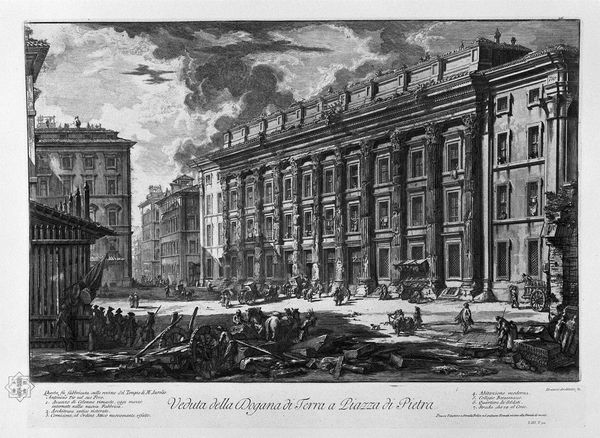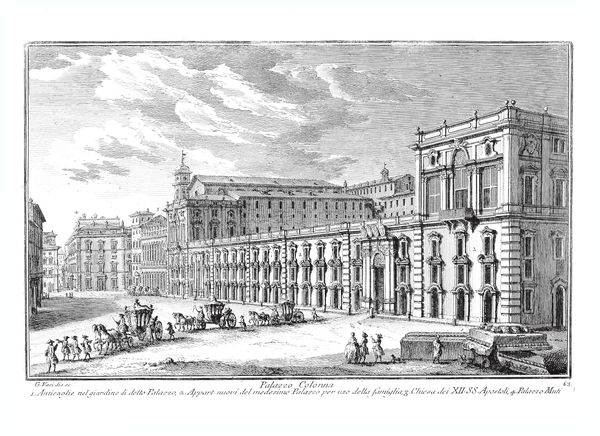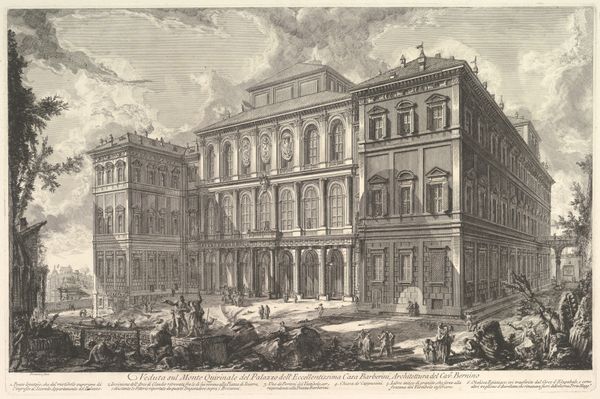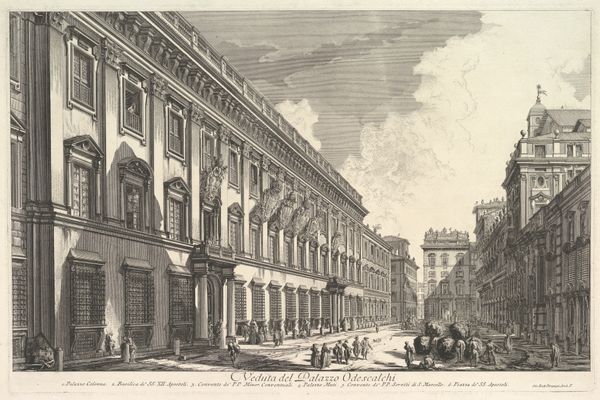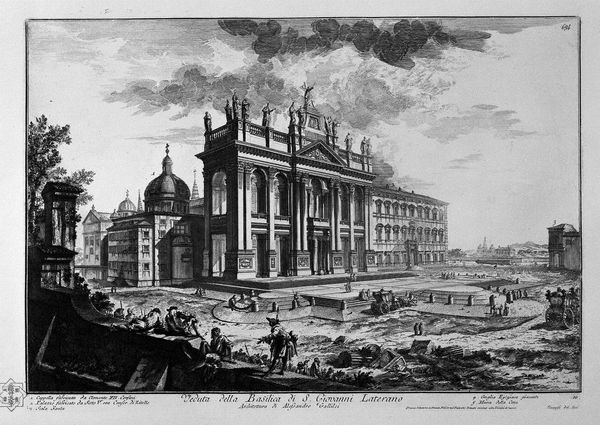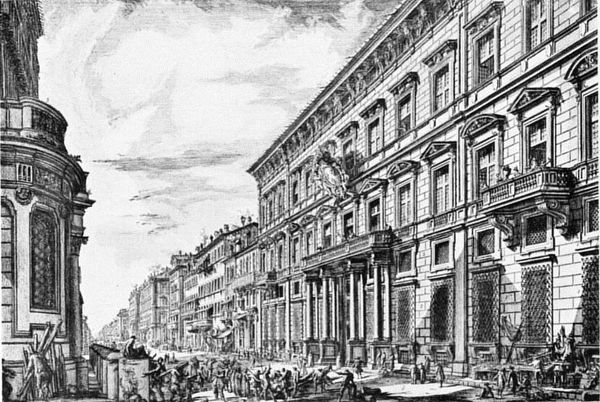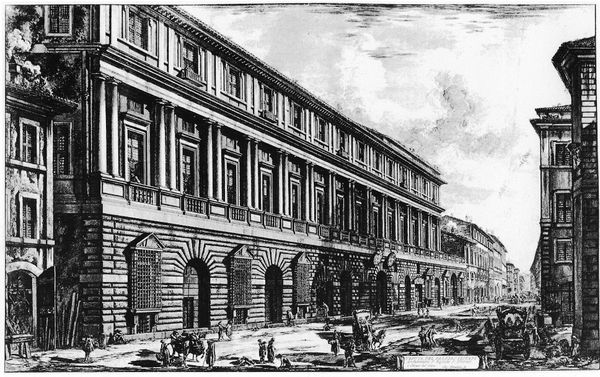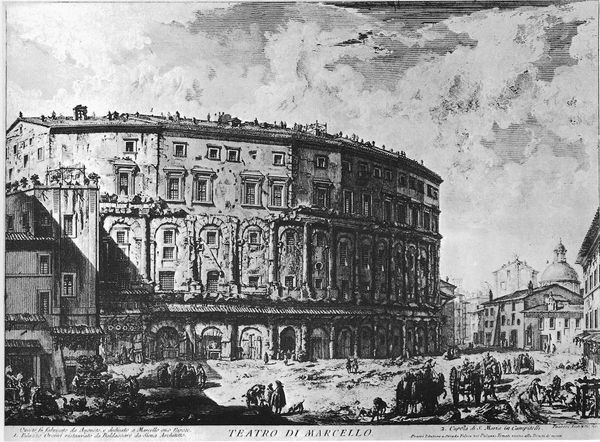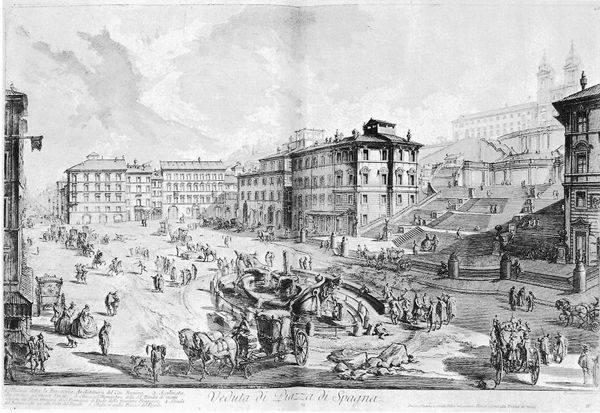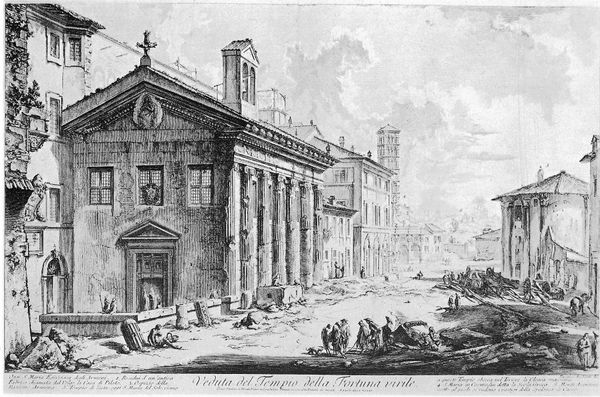
drawing, print, engraving, architecture
#
drawing
#
baroque
# print
#
cityscape
#
engraving
#
architecture
Copyright: Public domain
Curator: Looking at this print, I feel an overwhelming sense of human industry dwarfed by classical grandeur. It’s almost melancholic. Editor: It’s easy to get swept away by the sheer scale. This engraving is from Giovanni Battista Piranesi’s series “Vedute di Roma” or "Views of Rome." We’re seeing his rendering of the Piazza di Pietra, dominated by the remains of Hadrian's Temple. Curator: Ah, Piranesi. He's a master of visual storytelling. Even though it's just an architectural rendering, notice how the figures aren't mere decorations. They inject an energy, a pulse. And the deep shadows lend the whole scene this romantic feeling. Editor: Precisely. And that's what made his prints so popular. This image gives us access to how the city operated, what public life was like. He catered to a Grand Tour audience, folks eager to bring home views of these historic monuments. It shows us how classicism became enmeshed in the 18th-century tourist gaze. Curator: It also brings up ideas of temporal decay and how collective memory is constructed. You see that imposing architecture, but also the everyday bustling market—juxtaposing an ideal vision of Rome with lived experience. Editor: Right, he’s layering narratives, both the Roman Empire of the past, and the mercantile realities of his present. Curator: Also the shadows carry so much visual information; like, darkness implies untold stories of that architecture—history's unwritten aspects become symbolized within. The emotional heft of looking back. Editor: Well, and the image-making has its own politics. Piranesi used illusionistic techniques to control perspectives, dramatize the image—it's hardly a neutral view of Rome. What it chooses to include and exclude makes the case. Curator: Ultimately it's about conjuring a feeling; that timeless pull of the place is quite poignant and powerful in his skilled hands. It remains evocative despite— or because of— its staged effect. Editor: I see how this enduring visual makes you pause and ponder. Hopefully, it sparks something similar for our visitors, making them think of how visual culture and classical heritage shape identity.
Comments
No comments
Be the first to comment and join the conversation on the ultimate creative platform.
